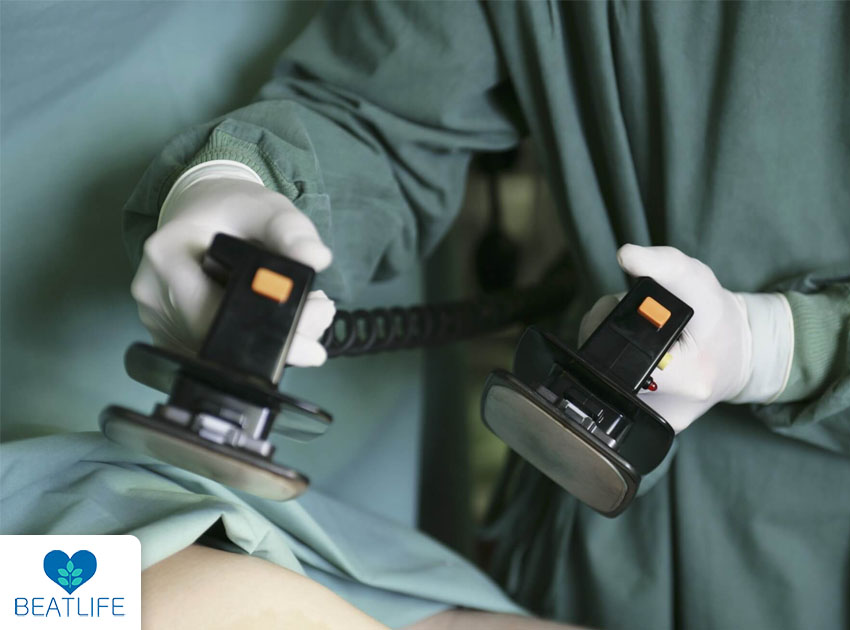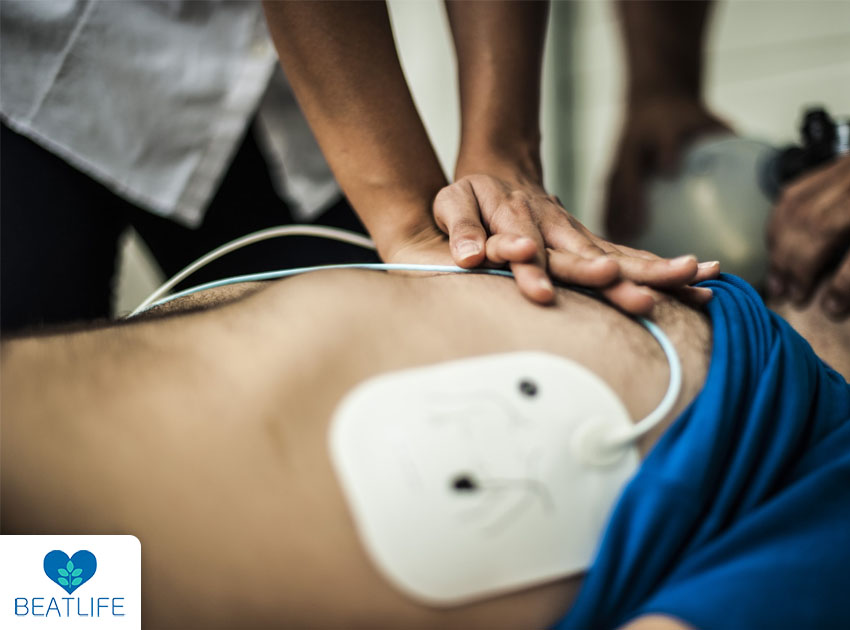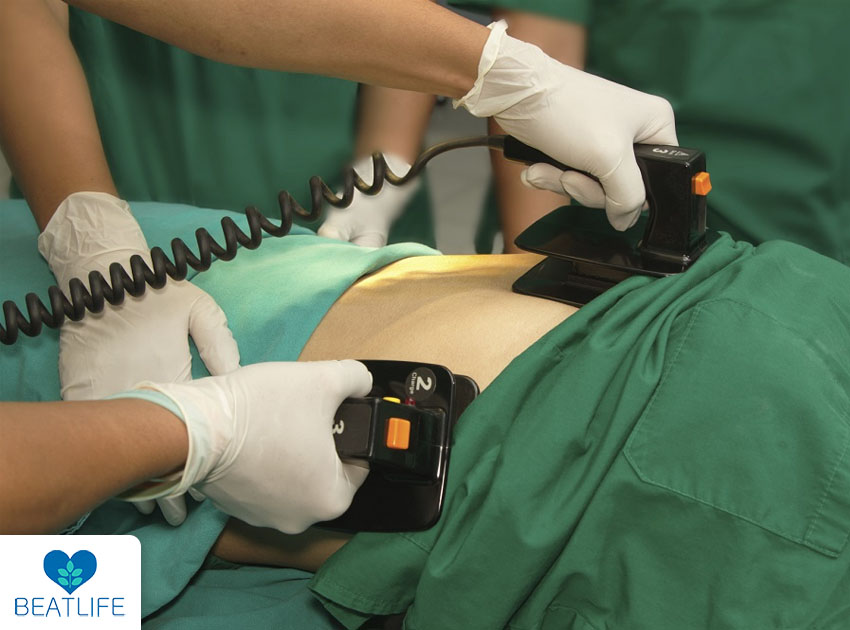BLS stands for “Basic Life Support”. It refers to the medical care given to a person in a life-threatening emergency—such as a choking incident or cardiac arrest—until they are able to receive more advanced treatment and full medical attention. First responders, emergency medical technicians, and healthcare professionals all commonly use BLS techniques.
Therefore, BLS is an essential component of emergency medical care that can make the difference between life and death. By administrating basic life support, healthcare professionals and first responders can help stabilize patients and improve their chances of survival until more advanced medical care is available.
Defibrillation is the best treatment for some serious cardiac rhythm problems that can cause the heart to stop pumping blood properly; therefore, it is an essential component of Basic Life Support (BLS). These problems are referred to as pulseless ventricular tachycardia and ventricular fibrillation. During defibrillation, an electric shock is given to the heart to help restore a normal rhythm and improve survival rates.
In this text, we will address the critical role that defibrillation plays in saving lives during cardiac emergencies. We will examine defibrillation steps, risks, and the ways technology has enhanced the delivery of this life-saving intervention.
Using CPR devices such as CPRMETER, made available by Beatlife, and automated external defibrillators (AEDs), rescuers can enhance the outcomes for patients suffering from potentially fatal cardiac arrhythmias and pulseless ventricular tachycardia.

What Is Defibrillation?
Defibrillation is performed when a patient has a potentially fatal cardiac arrhythmia, such as ventricular fibrillation or pulseless ventricular tachycardia. This procedure helps to return the heart to normal rhythm. It entails using a device known as a defibrillator to shock the heart with electricity.
The heart’s electrical system malfunctions during cardiac arrhythmias, resulting in an irregular or fast heartbeat. This may cause the heart to become ineffective at pumping blood, which could result in a sudden cardiac arrest. Defibrillation is the best course of action for returning the heart to a regular rhythm in such situations.
AEDs (automated external defibrillators) and manual defibrillators are two types of defibrillators that can be used for emergencies. AEDs are often located in public areas like malls, schools, and airports.
AEDs are intended for use in emergencies by individuals who are not medical professionals. They provide the rescuers with voice prompts and visual instructions to assist them while performing defibrillation. While, manual defibrillators are often used in hospital settings or by medical personnel.
CPRMETER is another device that can be incredibly helpful to ensure effectiveness and consistence when delivering chest compressions. Providing feedback and monitoring factors such as compression rate, depth, and recoil, help to improve patient outcomes and increase the likelihood of survival
Although defibrillation can save lives, it is crucial to understand that it is not a treatment for underlying heart conditions. It is a temporary measure to restore the heart rhythm to normal. additional medical interventions might be required to address the underlying cause of the cardiac arrhythmia, once a normal rhythm has been established.
How Does Defibrillation Work?
Defibrillation begins with the electrode pads are applied to the patient’s chest. The device that creates and administers the electric shock is called a defibrillator, and it is connected to these pads. Trained medical professionals carefully examine the patient’s heart rhythm with an electrocardiogram (ECG) monitor before operating the defibrillator.
When the ECG shows signs of ventricular fibrillation or pulseless ventricular tachycardia, the defibrillator is charged to the proper energy level. After charging, the electrode pads give the patient a controlled electric shock to the chest. This shock depolarizes a critical mass of the heart muscle so that the body’s natural pacemaker can take over and restore a normal rhythm.
Although the electric shock is, it effectively stops the chaotic and ineffective contractions associated with ventricular fibrillation or pulseless ventricular tachycardia by temporarily stopping all electrical activity in the heart. This momentary cessation of cardiac activity allows the heart to reset itself and restore its normal rhythm.

What Are the Steps for Defibrillation?
Defibrillation during BLS requires a methodical approach and adherence to specific steps to guarantee the procedure’s safety and efficacy. The essential steps in administering defibrillation are as follows:
1. Assess the situation:
It’s important to determine whether the patient is in cardiac arrest before starting defibrillation. Look for the signs indicating cardiac arrest such as lack of breathing, pulse, and being unresponsive. The presence of these signs suggests that defibrillation is necessary.
2. Prepare the defibrillator:
Set up the defibrillator, turn it on, and select the proper energy level for the patient. As directed in the manufacturer’s instructions and proper placement guidelines, place the defibrillator pads or electrodes on the patient’s bare chest.
3. Ensure safety:
During defibrillation, safety is of the utmost importance. Ensure that you and the patient are in a safe environment that is devoid of any water or other conductive materials. If other people are present in the scene, make sure they are at a safe distance. Ensure that no one is touching the patient or in contact with any conductive surfaces.
4. Deliver the shock:
Press the shock button on the defibrillator to deliver the electric shock. Ensure the electrodes and patient’s skin have contact to deliver the shock effectively and properly.
4. Deliver the shock:
Press the shock button on the defibrillator to apply the electric shock. Make sure that the electrodes have contact with the patient’s skin to deliver the shock effectively.
5. Reassess the patient:
After administering the shock, reassess the patient. Examine the patient for signs of breathing, pulse, and responsiveness. If the mentioned signs are still absent, continue with CPR.
6. Repeat if necessary:
If the first shock fails to restore the heart’s normal rhythm, defibrillation may need to be repeated. If so, proceed as before, making sure that the electrodes are placed correctly and safely.
7. Document and report:
Every detail of the defibrillation procedure must be recorded, including the duration, energy level used, patient reaction, and any problems that arose. Healthcare providers involved in the patient’s care should be informed of this information.

